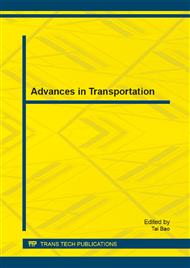p.911
p.915
p.922
p.927
p.931
p.935
p.940
p.945
p.950
Optimization Research of Berth Allocation and Quay Crane Assignment at Container Terminal Based on the Genetic Algorithm
Abstract:
In the operation of container terminal, berth allocation and quay crane assignment problems (BACAP) always prevent the container terminal from reducing time of ships in port and improving utilization of equipment. In this paper, the objective is to minimize total time of ships in port. Some reasonable and necessary hypotheses are proposed. The mathematical optimization model of BACAP based on the hypotheses is established. The genetic algorithm is used to solve the nonlinear programming model.
Info:
Periodical:
Pages:
931-934
Citation:
Online since:
January 2014
Authors:
Price:
Сopyright:
© 2014 Trans Tech Publications Ltd. All Rights Reserved
Share:
Citation:


